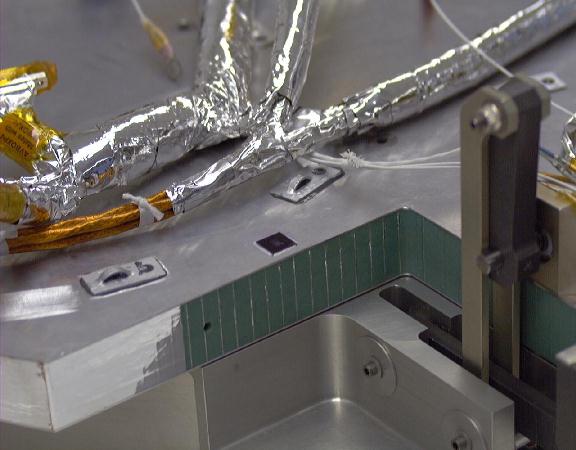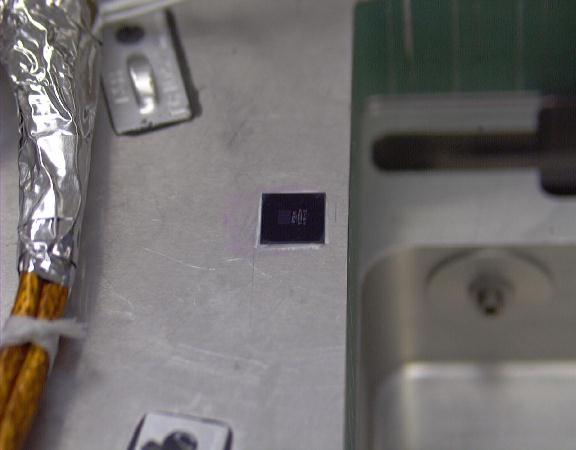

|
| SEARCH |
Asteroid named after Rotary´s Founder |
Photo
of Paul when he, briefly, took up flying, about 1910 The
peregrinations of Paul Harris continue. Rotary's founder, who circled
the globe numerous times during the course of his life time, would, no
doubt, be pleased to know that his latest namesake, an asteroid, will be
circling the heavens for years to come. This is thanks to Dr. Eleanor
Helin, an astronomer at the Palomar Observatory in San Diego,
California, U.S.A. who discovered the celestial body. The
peregrinations of Paul Harris continue. Rotary's founder, who circled
the globe numerous times during the course of his life time, would, no
doubt, be pleased to know that his latest namesake, an asteroid, will be
circling the heavens for years to come. This is thanks to Dr. Eleanor
Helin, an astronomer at the Palomar Observatory in San Diego,
California, U.S.A. who discovered the celestial body.Dr Helin, a victim of polio, wanted to recognize Rotary for its global effort to eradicate the disease and found an out-of-this-world way to do this by naming the asteroid after our founder. Source: 1995 issue of the district 1010 'Flyer' magazine. RGHF Senior Historian Basil Lewis, England, 1 July 2009 Also, Paul's name is included in another space project: Note: As a public outreach effort, over 1 million names were collected and placed on the STARDUST spacecraft, which will visit Comet Wild 2 in 2004. Including: P HARRIS PAIGE E. HARRIS PAUL P. HARRIS PAULA HARRIS PETER HARRIS What is the purpose of sending names into space? Placing the names onto the STARDUST spacecraft was a public outreach effort.    It allowed people to be personally involved with the STARDUST Mission and helps to promote public interest, awareness and support of the space program. It also provided a way to honor individuals by enabling them to be associated with mankind's most advanced technological endeavor and to be part of the quest of the human species to reach for the stars. Where are the microchips now? The microchips are in outer space onboard the STARDUST spacecraft, and also back on Earth. STARDUST was launched on February 7, 1999 carrying the two sets of microchips. Two copies of each chip were installed on the spacecraft (for a total of four chips). One set of microchips is mounted inside the Sample Return Capsule, and was returned back to Earth with the capsule when it landed in Utah on January 15, 2006. The capsule along with the microchips have been transported to the curation facility at Johnson Space Center in Houston, Texas on January 17, 2006, where they currently reside. The other set of chips is mounted in the spacecraft body and will remain in space forever. Where are the microchips inside the Sample Return Capsule? Refer to the photos below, which were taken prior to Stardust's launch. Photo of Microchip #1 Photo of Microchip #1 Diagram of Microchip locations How were the names collected? During the first name collection period in October-November 1997, the names were submitted to the Planetary Society who collected the names for us. The names were submitted by email, postcard or the Planetary Society home page. During the second name collection period, which ran from May 1998 to August 1998, the names were submitted via the Web on the STARDUST home page and the National Space Society home page. How many names are on the microchips? There are two microchips. The first one has 136,000 names and the second has over 1 million names. Whose names are on the microchips? The names on the microchips are from individuals who submitted their own names along with the names of friends and family if they chose to include them. Also, all members of the Planetary Society and the National Space Society current as of 1998 were included. In addition, as a special tribute, all names on the Vietnam War Memorial in Washington, DC were included. And finally, the names and selected photos of members of the STARDUST Mission team were also included. Will the microchips remain in space or will they come back to Earth? Both. Two copies of each microchip were made. One set will remain in space in the STARDUST spacecraft which will continue to orbit the Sun after the mission. The other set of chips will be returned to Earth in the Sample Return Capsule. Plans are to place the returned microchips in a major museum, most likely the Smithsonian Air & Space Museum in Washington, D.C. How big are the microchips? The names are electronically etched onto a fingernail-size silicon chip at JPL's Micro Devices Lab. Writing on the microchip is so small that about 80 letters would equal the width of a human hair. Once inscribed, the names can be read with a strong optical microscope or an electron microscope. Can you provide more details on how the names were engraved onto the microchips? Sure. The process is rather technical, but we'll give it a try. First, note that the microchip is not an a electronic part like a computer chip, but is actually a silicon wafer. The names are placed onto the wafer chip through a technique called Electron Beam Lithography. The wafer is 4 inches square initially and comes with a layer of silicon oxide on its surface.. The wafer is coated with a thin photographic film of photo-resist PMMA (pexiglass). The names are stored on a VAX computer and converted into a format usable by the electron beam lithography tool. The data is read and fed into the electron beam tool which engraves the names into the PMMA surface of the wafer chip using a highly-focused electron beam. The names can be written multiple times to the wafer if we want to make multiple copies of the small microchip. The wafer then goes through a process similar to developing film, where the wafer is rinsed in a developer that removesexposed PMMA (or the area written on by the electron beam). The next step is to coat the wafer with a thin metal film (titanium & platinum). This is done by placing it in a vacuum chamber and heating a small amount of the metal, which evaporates and coats the wafer by condensing on it. The wafer chip is then placed in a solvent which dissolves away the remaining PPMA and any metal attached to it, leaving behind the letters of the names. Finally, the wafer is cut up into 1x1 centimeter-sized square chips. |
RGHF members, who have been invited to this page, may register RGHF members, who have been invited to this page, may register If a DGE/N/D joins prior to their year, they will have more exposure to Rotary's Global History by their service year. This will be beneficial to all concerned. *Based on paid members, subscribers, Facebook friends, Twitter followers, mobile app users, History Library users, web pages, and articles about Rotary's Global History RGHF Home | Disclaimer | Privacy | Usage Agreement | RGHF on Facebook | Subscribe | Join RGHF | |